
There are two steps to retrofitting a factory Toyota electric locker to your third-gen 4Runner: one, figuring out and installing the right differential and axle; and two, wiring the e-locker so you can use it with the touch of a button.
We wrote about the heavy mechanical parts in the first half of this storyline, in “Biopsy of a Toyota e-Locker Swap: Part 1” [http://www.off-road.com/trucks-4x4/tech/biopsy-of-a-toyota-elocker-swap-54205.html]. It’s the half of this process that involves the axle and differential, learning how to differentiate (hah, diff humor) which parts fit what, then finding and attaching the hard parts to your truck. The wiring, which comes next, is the hard part (another play on words there) – what connects to what, what powers what when, and which what is right.
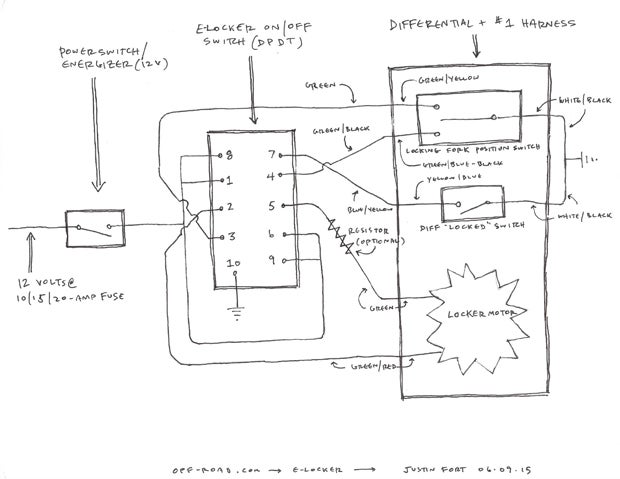
Planning for Wiring the E-Locker: Essentials
So, your axle and differential are hung by the chimney with care, and it’s time to get that e-locker under control – push-button control from the cab; instant-on control (almost instant; it takes a few moments to engage); trail-ready control that lets your 4Runner be locked when it’s rocky and pleasant when it’s not.
Method #1: Call it “get ‘r done” or “straightforward”: you aren’t worried about keeping your truck interior looking perfectly stock, or you’re all about the function. In the end, you can control the factory e-locker with as little as one switch and six or seven wires.
Method #2: This is OEM-correct style – the factory e-locker controller, dash indicator, much of the factory harnesses and plugs from your donor vehicle (or the dealership), using as many OEM parts, hangers and connectors as possible. All of the essential pieces are available from the dealership (though we tend to find the junkyard/salvage/Craig’s List experience more satisfying and less expensive).
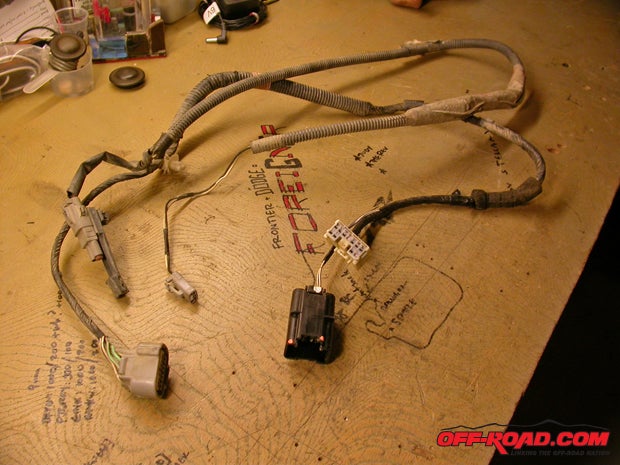
Starting with the home-built wiring, we found this process to be pretty involved, so we’re going to focus on that method, and approach the OE-based wiring in another article.
There are multiple choices to make using the homemade e-locker control: relays; cutoff switches; wiring routing; indicator lights (indicating what?); resistors to slow the motor; use of the OEM harness and plugs. You have options, and you can set up these controls as you please.
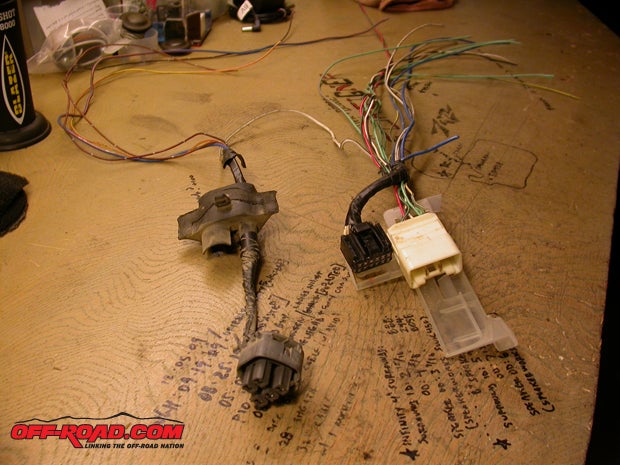
We chose to use OE parts for several critical connectivity chores, and aftermarket/non-stock bits when they simplified the process or helped avoid invasive mods. This balanced Toyota’s typically well-designed (though sometimes complicated) factory parts against functional simplicity that steered us towards modified or aftermarket parts.
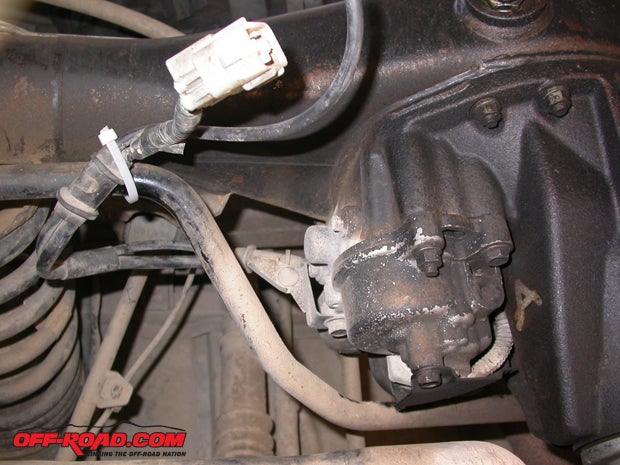
12-volt power: we debated where to connect the power for the e-locker. Folks have done it through radio power, different fuses in the cabin junction box, or pulling power from the cabin trunk wires (the only option we don’t like – too random). We went back to our guiding philosophy – simple – and used a 10-amp Add-A-Fuse with the 10-amp ignition circuit in the cabin fuse panel. The Add-A-Fuse was tolerable because we were wiring one device, not a host of things, so it would be a dedicated fuse. They’re not pretty, but they work with factory power (no vampire clips), are easy to connect and easy to replace.
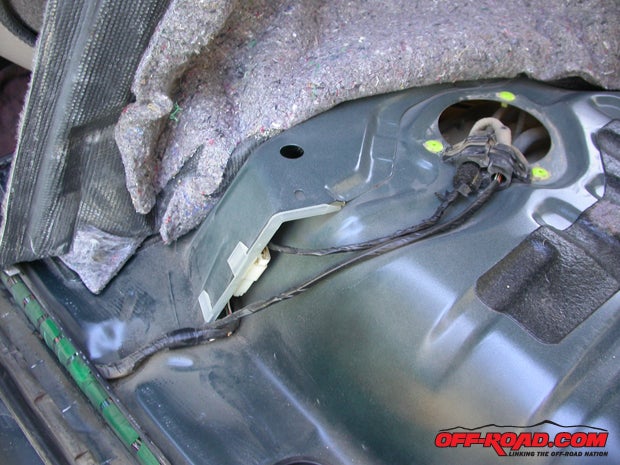
OE wiring harnesses: the one that connects to the e-locker (the “e-locker bundle” – #1) and the harness that connects to #1, runs over the fuel tank, into the cabin and should include the body pass-through grommet (the “e-locker bundle extension” – #2). Both are dealership/junkyard/donor truck parts.
Partial OE harness: #3, the “e-locker body connector,” links #2 to the main cabin wiring inside the truck, near the point where the #2 enters the cabin beneath the driver’s rear seat. It’s possible, but not reasonable, to extract #3’s connectors and associated wires from the main body harness whole; instead, expect to cut #3 out as close to the main harness as possible, getting the plug and at least a foot of the wires when you do.
Control switches: one for the e-locker, and one as its energizer (as a safety cutoff). You can streamline things and use sturdy aftermarket switches, or wire relays into lightweight switches. We were perusing the switches at OTRATTW (Over the River and Through the Woods) [http://www.otrattw.net/home.php] and, to our pleasure, found a serious dual-pole/dual-throw (DPDT) option (with dual independent indicators) that could handle the current that would be sent to the e-locker, so we didn’t need relays at all. This, coupled with a lighted single-pole/single-throw (SPST) that we had in the garadtch, meant we had lighted indicators at each switch.
Parts to Get from Your Donor Vehicle (or Toyota)
From the donor rig that gave us our e-locker, we acquired the #1 “e-locker bundle” harness that connects to the diff and contains the OEM diff breather, and the #2 extension – the “e-locker bundle extension.” These two harnesses are the essential ones to get if you’re playing along at home. Note: there are aftermarket kits for this maneuver that can be had with a harness that reaches from switch to pig, like the one offered by 12-Volt Guy [http://www.12voltguy.com/], but they’re not as elegant as what we developed, and they cost more.
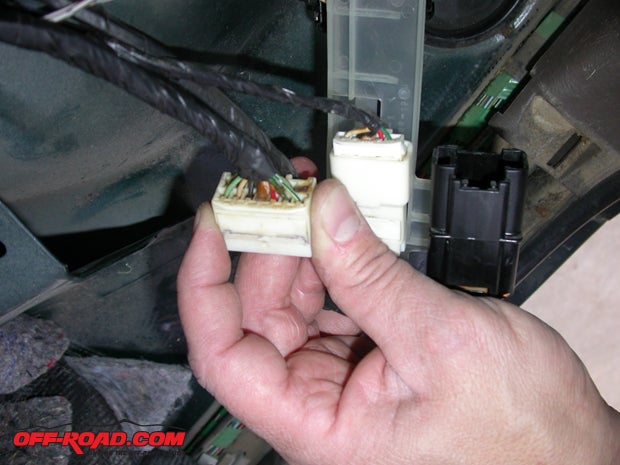
With harness #1 and 2 and the right switch, you’ve got enough to make this project go with almost no additional expense. However, if you’re able to get the partial #3 harness, you can use it as an ideal plug-in connection. #3 is not essential, though, and any Molex or water-resistant six or eight-pin connector will do the job. In fact, our original intent was to reuse some heavy-duty OE-Toyota plugs from a second-gen 4Runner that we cut up years ago, but when the owner of the donor third-gen let us have as much of the interior harness as we wanted, it became a non-issue. We now had the factory plugs and wires all the way from the e-locker to the cabin, and that’s homebrew sexy.
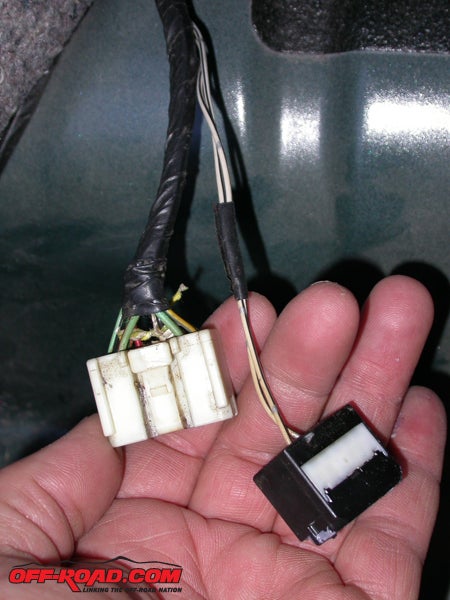
Routing and Modifications of the OE Harnesses
Repurposing factory wiring means you’ll need to tweak it. The #1 harness doesn’t need anything. Because Toyota has been known to change parts and designations midway through a production run, make sure to identify the wires in that #1 harness: the two wires that power the actuator motor (green and green-red, of a slightly heavier gauge than the other wires in the harness); two wires that control the locking position-limiter fork in the diff (green-blue/black and green-yellow, though there are noted cases where this green-yellow is just green; both are lighter gauge than the motor-power wires); the blue-yellow wire for the locker-on indicator; and the two white-black ground wires (from the position-limiter fork and the locker-on indicator). These are the wires that matter.
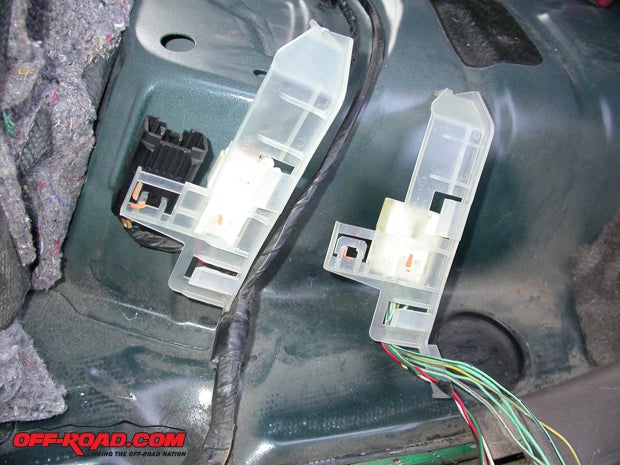
The over-tank extension (#2 harness) is different than the #1 harness in a few ways. It’s got ABS brake-sender wires in it (white, black, red and green). We disco’d these wires on the diff end and pulled them out of the plug on the body end so they’re out of the way, but left them in the harness in case something down there needs to be powered at a later date. Also, there were some wire color changes from #1: the green-yellow wire (if it’s not already just green) is green in #2; the blue-yellow wire becomes yellow-blue; also, the two ground wires split into a separate plug. As far as we’ve figured, all four-wheel drive third-gen 4Runners have a plug in the main cabin harness that will connect with the ground-only plug in harness #2, though we had to change one of the pins in the #2 ground plug to align with the main cabin harness plug. At this point, you’ve got five wires left in the #2 harness to connect to your e-locker switch.
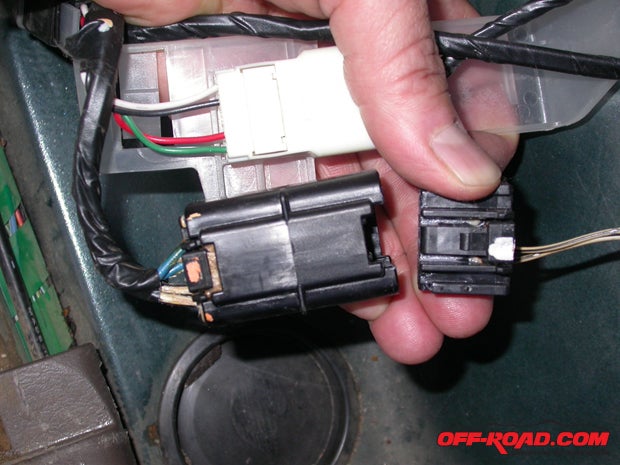
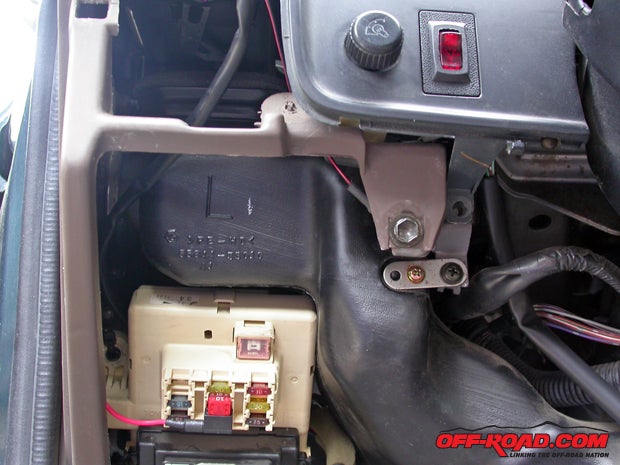
With #3 (the in-body harness, with which we got about two feet of wire), we confirmed alignment of each wire’s duty and color (the same as #2, thankfully) and soldered five-foot lengths of stranded automotive wire to each. We understand the need to avoid buying stuff, but try to use wire colors that make sense so you don’t mistakenly explode your headquarters.
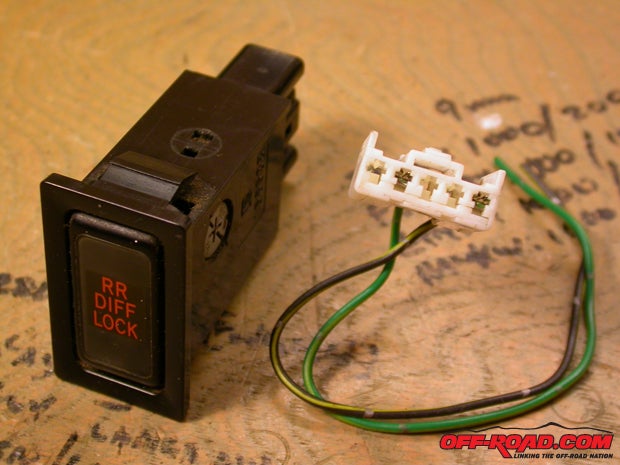
Important: with the #3 harness now sporting seven-foot leads, we could plug into #2 under the driver’s rear seat (where the body-to-undercarriage rubber port resides) and reach the center console where we planned to install the multi-purpose OTRATTW control switch. We are also able to pull these wires from the center console and reroute them, without cutting, to the driver’s left-foot kick panel when we pursue the factory-style e-locker wiring (which uses that area to house the rear-diff processor and more than a few junctions).
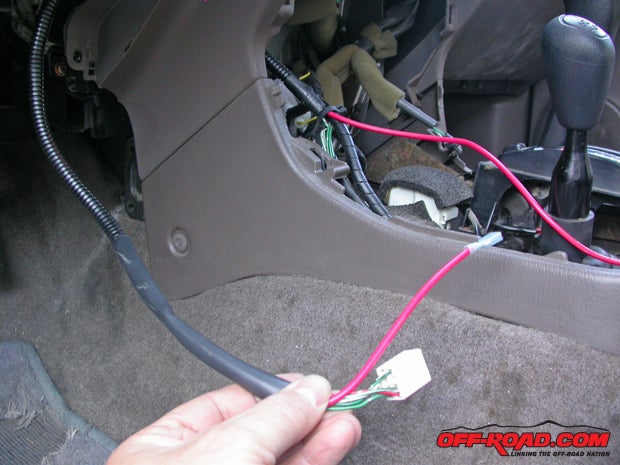
Techniques and Ought-Tos
Your author can do a lot of things, but soldering has not been amongst them until this project. The engineer next door (whom I seek out to get weird wiring-theory answers) took a few minutes to teach me some of the art that is proper soldering, and it makes wiring a vehicle much more... sure. I’m just a beginner, but this is what I learned, and it helped.
-It’s not about the heat; it’s about the preparation. Being close on the temperature makes soldering easier, but prepping the tool and wires makes things click. Clean the iron, tin the iron (get a little solder on the iron to draw the solder through the wire), tin the wire.
- Tinning: getting solder on the part to be soldered, or on the tip of the iron.
- Keep the tip of the iron clean with steel wool or light sandpaper.
- Solder conducts electricity.
- Regular solder doesn’t like aluminum.
- Electrical solder is not the same as mechanical solder.
- Some solders have flux in them – it helps them bond with the metal. The type of flux is named as the “core,” such as “rosin-core” solder, because it’s in the solder.
- Rosin-core solder is fine for most electrical soldering – acid-core is not.
While we’re at it, if you don’t know wiring basics like how to read a wiring diagram, what a ground or relay is, and how to test for current, this isn’t the job for you until you do a little learning. Take one of those community college auto-wiring courses (fun!), or at spend a few minutes reading about the rules of not burning your truck to the ground like a snot-nosed rookie.
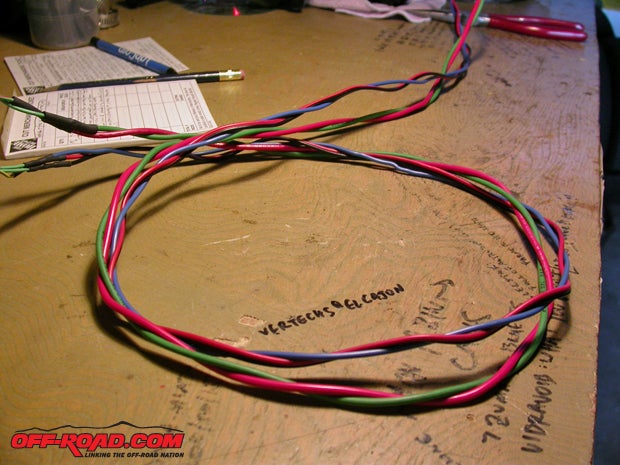
12-Volts of E-Locker Control: Something Borrowed, Something Innovated
We grabbed 12-volt power from the driver’s side in-cabin fuse panel at the 10amp “Gauge” fuse with an Add-A-Fuse. Like indicated earlier, we’re doing this one simple and effective. There are a lot of ways to get power, but we wanted to find a source that was accessible, direct and repeatable (and not a vampire clip – the previous owner of this truck appears to have had a long-running affair with a vampire-clip retailer).
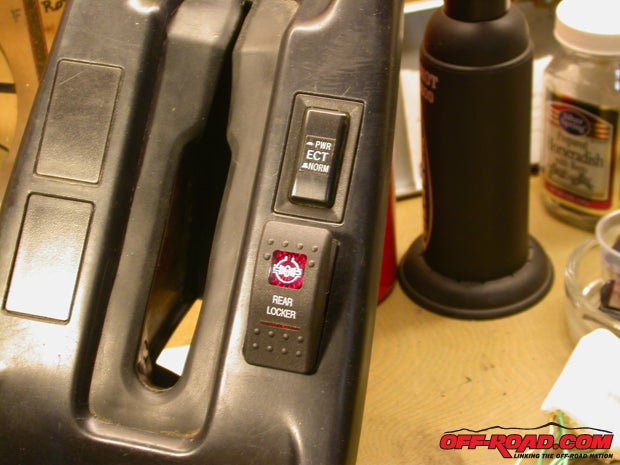
We put a master/energizer/cutoff switch (a lighted SPST toggle capable of hoisting some weight) inline with the power cable from the fuse panel to provide an added layer of safety for the e-locker. One of the few downsides of controlling the Toyota e-locker without the OE computer is that you obviate its safeties, and no one wants to click on the locker at 80 mph... With the master-power switch, we reduced the likelihood of mistakenly activating the locker.
If you’re feeling nifty, you can incorporate the factory “RR DIFF LOCK” switch as the energizer switch in place of our inexpensive lighted toggle. Though we judged the “RR” pushbutton to not be capable of handling the pass-through current necessary to motivate the e-locker (unlike the lighted toggle we used), you can wire the RR DIFF LOCK switch to control a relay that then carries the weight, with the bonus of it being wireable into the dash lights.
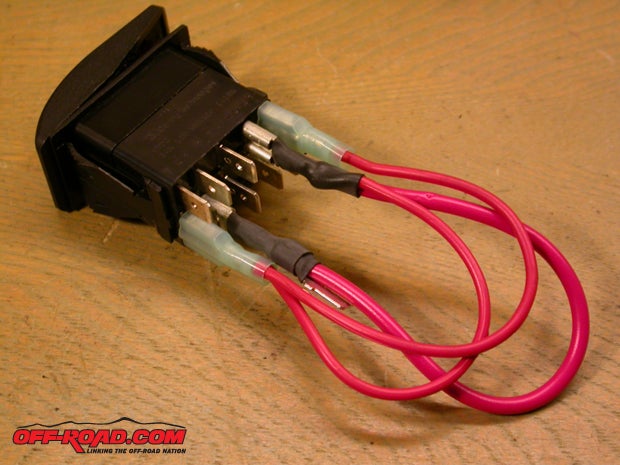
The main switch we used – a burly DPDT unit manufactured by Carling in Mexico (no Chinese knockoffs for us) – is sold by the aforementioned OTRATTW. These are the guys who retail switchgear with entertaining and informative covers. We chose a practical label –“Rear Locker” – but you can opt for “Ninja Suppression Mode” or “Prius Attack Lights” if you prefer. Jim at OTRATTW spec’d a beefy 12-volt, 20-amp DPDT on-on switch that could handle the current required to turn the e-locker on and off, which made a relay unnecessary, and the switch had the lighting to express both power-on and locker-on independently.
Pay attention to the pin numbers on a switch. They’re usually consistent from one manufacturer to another, so the #1 or the #5 pin on one schematic analogs to where things go on another. Using those pin numbers, we can also better illustrate where e-locker wires go. Per our method (see the schematic for more information), we wired the main switch as follows: 12-volt power to the #1, 6, 8 and 9 pins (switch power, diff-engage, diff-disengage, diff-locked indicator), locker motorvation goes to pins #2 and 5 (green/red at #2 and green at #5), the locker fork position switch connects to pins #3 and 4 (green at #3 and green/black at #4), pin #7 meets the diff-locked switch (blue/yellow wire) and pin #10 grounds the switch-power indicator.
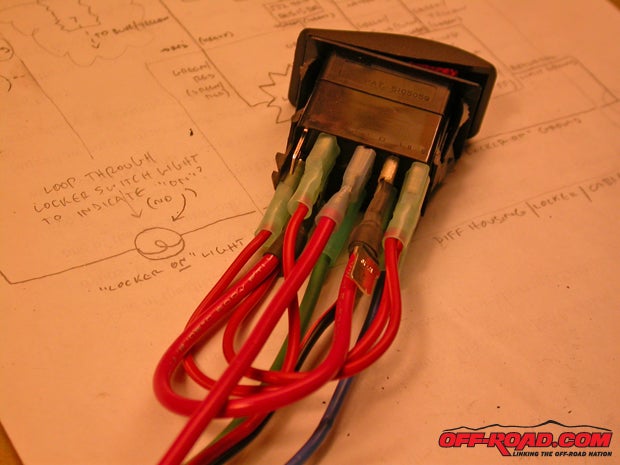
Because 12-volt power was required at several pins in the main switch, we made a jumper harness that would connect fused 12-volt power to the four power-hungry pins: “switch power” (which will match the status of the energizer switch), “diff-engage” and ‘”diff-disengage” for the e-locker, and “diff locked” that passes through the engagement sensor in the e-locker.
Details to Consider
A feature used by several smart guys with e-locker wiring plans was a resistor (one recommendation was for a five-ohm, 40-watt unit) on the green-wire side of the e-locker actuator, what’s main purpose is to slow down the motor. Because the feature was not included in all of the wiring sketches, we chose not to – no reason you can’t experiment with one yourself.
If the lighted OTRATTW switch turns out to not be bright enough for use in a sunny, well-lit cockpit, we’ll run an LED to the dash in a position that’s more conspicuous, or patch into the OE dash indicator for the rear locker. Having the light in the center console wasn’t ideal from the perspective of a perfectly arranged interior, but it simplified a significant step in the process (wiring that separate locker-on indicator).
If you’re searching for e-locker harnesses (the #1 and #2 harness), there’re two different plug styles – make sure yours matches the diff-housing connector. 12-Volt Guy has some good photos to help you differentiate plug types.
Do yourself a favor, and study the wiring diagram in this story and online (just search “Toyota e-locker wiring”). This one is our creation, with some ideas of our own joined by those borrowed from several e-locker wiring plans created by folks in the Toyota off-roading community.
SOURCES
OTRATTW
otrattw.net
408.252.1544
sales@otrattw.com
The 12-Volt Guy
12voltguy.com


 Your Privacy Choices
Your Privacy Choices